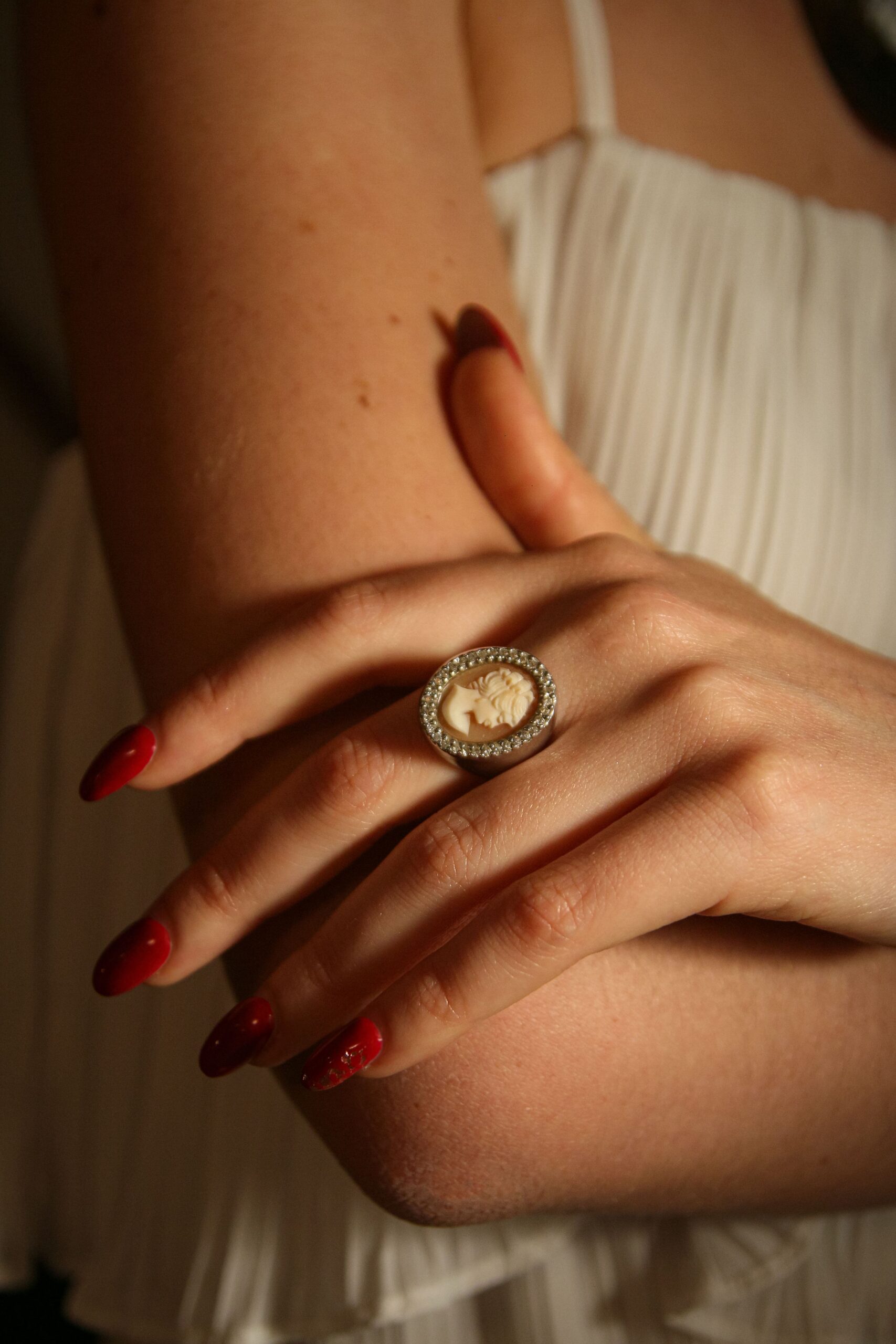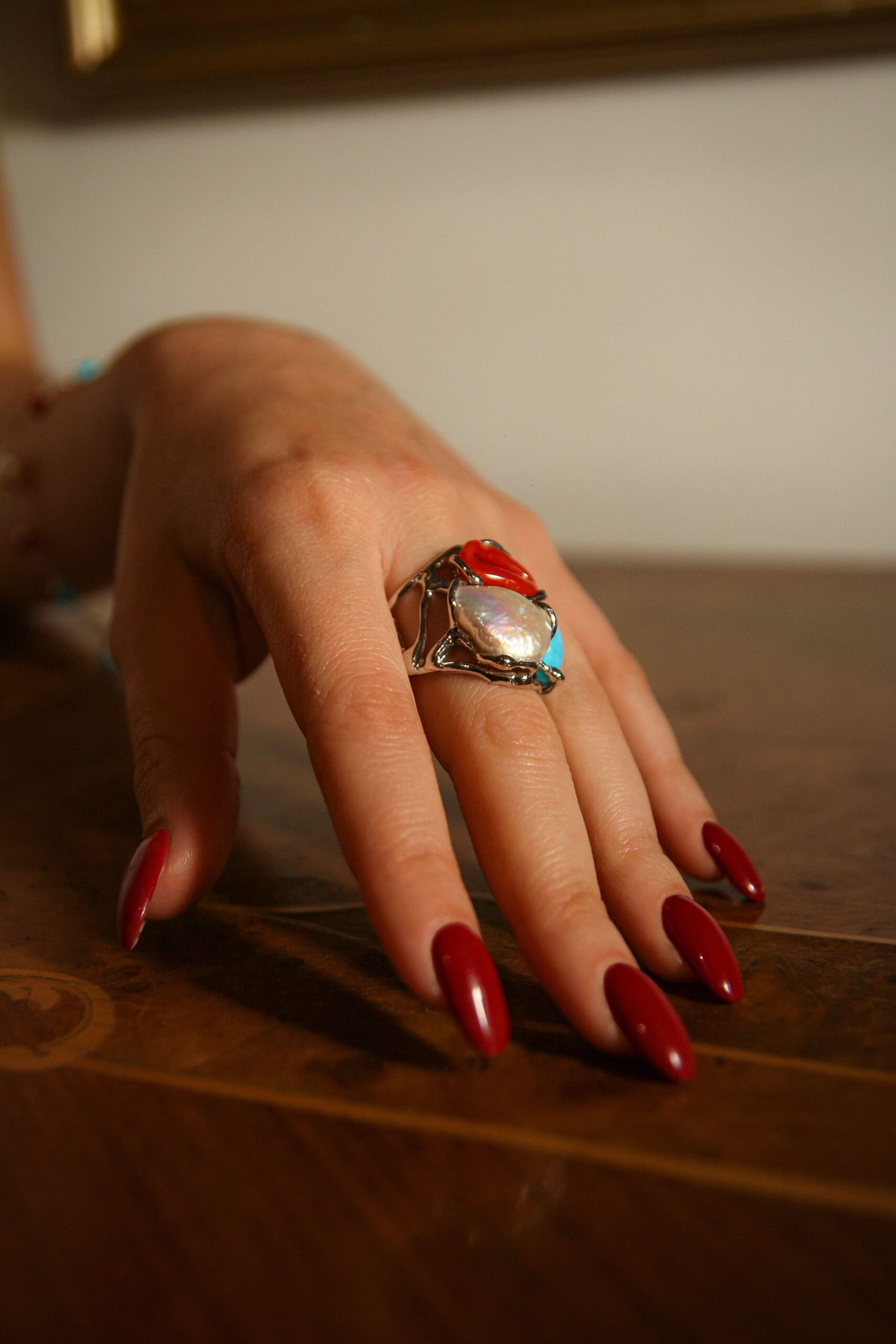Coral's history
Il Coral is a plant form made up of millions of single-celled creatures that live on the seabed and are called coelenterates. Their name derives from a long tube that runs through their body, it is in fact called coelenterium. The colony of coelenterates releases a deposit of calcium carbonate which solidifies and takes various and different forms. The most common is that of a sapling.
Centuries ago, the Mediterranean Sea, along the Sicilian, Sardinian and Neapolitan coasts, was full of coral; in fact it was first in Sicily and then in Torre del Greco that the art of carving and modeling coral was born. It was not and is not easy to capture coral from the bottom of the sea. First of all we must say that we have two types of coral: false coral, which grows at a depth of about 30/35 meters. In depth the sun still influences the light and the heat of the water, so the coral remains whitish and soft; and real coral, which takes on a color similar to bull's blood and is found at a depth of about 70/80 metres. The deeper we go, the darker and harder the coral becomes and is more valuable.
We have two types of corals regarding color: the red bull's blood and the white angel skin. Both are valuable but the more expensive is the latter; in fact, a kilo of that coral costs between 300/50 million lire (about 170,000 dollars at today's exchange rate). Now, the coral reefs that used to be between Capri and Torre del Greco have disappeared as it takes about 100/120 years to have a small branch of coral, and the craftsmen have to import the coral from Japan. But that coral is not as precious as what was in our sea.
One can easily recognize a piece of Mediterranean coral from that coming from Japan: the Japanese red coral has a whitish vein along the whole body, the Mediterranean one has none. The same goes for angel skin coral, the Japanese one has a reddish vein all along its body while the heaviest one found in our seas (since 1400) was about 470 grams. Coral was also important in the past. It is said that the Salerno Medical School (13th century) used coral powder to treat and prevent diseases of the digestive system. And it is still important today, given that coral is used in the pharmacy to prepare toothpaste. But the true destination of coral is jewelry. People from all over the world come to Torre del Greco to buy a work of art made from a branch of coral.

Mediterranean red coral

Material:Mediterranean red coral
Size:: 62 x 43 mm
Product number: RC0001

Material:Mediterranean red coral
Size:: from 10mm to 30mm
Product number: RC0003

Material:Mediterranean red coral
Size:: from 2mm to 15mm
Name: Oval cabochons

Material:Mediterranean red coral
Size:: from 2mm to 15mm
Name: Round cabochons






Coral Engravings

Material:Mediterranean red coral
Weight: 12.2gr
Product number: RC0010

Material:Mediterranean red coral
Weight: 11,4gr
Product number: RC0012

Material:: Pink White Coral
Weight: 10,0gr
Product number: PC0001

Material:: Pink White Coral
Weight: 23,4gr
Product number: PC0002
Coral necklaces

Material:Mediterranean red coral
Name: Long branches
Length: 16'' - 18'' - 20''

Material:Mediterranean red coral
Numero: Short branches
Length: 16'' - 18'' - 20'' - 24''

Material:Mediterranean red coral
Name: Tubular
Length: 16'' - 18''

Material:Mediterranean red coral
Name: Nuggets
Length: 16'' - 18'' - 20''






